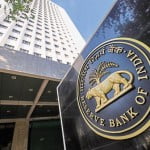
it’s far widely believed that India is on the cusp of a economic services revolution. possibly no circulatehas generated as an awful lot exhilaration as the licensing of payments banks, a brand new elegance of differentiated financial vendors introduced with the aid of the Reserve financial institution of India (RBI)ultimate 12 months.
Of the eleven players who were issued in-principle approvals for bills financial institution licences, one (Airtel M commerce services Ltd) has received the final licence, and others have announced excessive-profile launches and recruitments. lately though, three payments banks (Cholamandalam funding, Dilip Shanghvi-Telenor economic-IDFC bank and Tech Mahindra) have withdrawn their programs, revivingquestions on the viability of the commercial enterprise model.
We accept as true with that the achievement of those new entities will depend to a notable quantity on their capacity to head past serving the properly-banked telephone–sporting purchasers, consisting ofthe readers of Mint, who’ve been the focal point of virtual bills in India to date. payments banks will needto creatively reach the low-earnings and financially underserved—the so-called base of pyramid (BOP)customers. indeed, familiar economic inclusion turned into a riding motivation at the back of RBI’s issuance of these payments bank (and small finance financial institution) licences.
but, as traditional banks can testify, developing a version this is both effective in reaching the BOPpatron and commercially worthwhile, is far from smooth. it’ll require a paradigm shift. Leveragingtechnology to lessen value-to-serve will of route be crucial, however a lot greater can be wished. on this collection, we will discover three key elements that we assume are important to correctly serving BOP consumers.
First, players will want to deepen their knowledge of the precise needs of BOP clients and developmerchandise and client stories tailor-made to these desires. This doesn’t sound like rocket technological know-how and it isn’t, except that the economic products presently to be had to bop customersregularly appearance suspiciously like hand-me-downs and do no longer fit their wonderful profits, expenditure and savings patterns. as an example, income at the BOP tends to be greater abnormal and unpredictable, regularly cobbled collectively from numerous resources. financial savings are confined,regularly taking the form of small amounts stored each day that want to be banked fast to save you them from being spent. Formal credit score histories are certainly non-existent. there is heavy reliance on casualnetworks like friends and own family for financing large–price ticket wishes.
vendors will want to broaden new merchandise which might be higher ideal to the financial lives of BOPcustomers, as an instance, each day micro-saving products and micro-loans that depend on non-conventional information. they may need to increase partnerships with different financialestablishments to satisfy the full scope of consumer needs. more essentially, while they can leverage their current consumer relationships (just like the ones led via telcos), they’ll need to orient themselves toend up really purchaser-centric. they will need to embed inside their organisation the ethos of providinga deferential and wonderful customer revel in to dance clients to earn their agree with and loyalty (as Janalakshmi currently aimed to do, working with CGAP and Dalberg). CGAP refers to the Consultativeorganization to assist the terrible, a international partnership of 34 groups that paintings to advanceeconomic inclusion.
2nd, attaining out to this new target person group will require combining ‘excessive-tech’ with ‘high–touch’. technology is, of route, going to be key to keeping expenses low. the use of Aadhaar-connectedauthentication, realize-your-customer and e-sign (factors of the so-called IndiaStack) and the proliferation of mobile/online fee structures maintain special promise for lowering the cost of transport. however,cellphone penetration continues to be low and digital literacy is a main mission a few of the BOP. So,payments banks will want to rely on bodily agent networks, as a minimum within the foreseeable destiny, to serve this segment. Given the sobering experience with business correspondents (BCs) in India, it’s farfar from clean that economic institutions have cracked the agent version.
currently, banks largely rely upon BCs who’re dedicated to the financial offerings enterprise. To attainscale and hold expenses attainable, players will need to harness the capability of assorted agent models—starting from dedicated ‘wealth advisors’ at one give up of the spectrum to ‘lite’ BC marketers whosimply focus on some easy transactions whilst doing core organizations at the other.
subsequently, gamers will want to harness the ability of the ubiquitous kirana (neighbourhood) save, by using making it well worth their while to accept virtual bills. that is in particular proper for paymentsbanks, as a way to need to depend closely on small-price tag transactions for sales, given boundaries to their net interest profits. nowadays, ~95% of retail in India is unorganized, and simplest 6% of those retailestablishments be given virtual bills. really, coins continues to be king and digitizing small service provider bills is a herculean challenge. however research we lately carried out amongst smallmerchants as a part of a USAID-ministry of finance-led partnership to support economic inclusion throughdigital bills shows that there is desire. We determined that small traders who do take delivery of digitalpayments are glad with their revel in, recognizing its advantages in terms of protection and overcomingpain points of cash consisting of handling loose change. but many others lack awareness and featureconfined hobby in attempting digital payments, mentioning the pervasiveness of coins around them asthe key reason (curiously, ahead of problems which includes tax and transaction charges). those whoare willing to attempt face some distance too many up-the front barriers—documentation necessities (for instance, commercial enterprise registration papers), excessive setup costs (as an example, factor-of-sale device expenses, commencing a new bank account with the obtaining financial institution) andcomplex pricing plans. bills banks, as overdue entrants, are properly–positioned to take in theassignment of disrupting merchant recognition because it stands these days.
Varad Pande is a accomplice at Dalberg, a worldwide approach and coverage advisory company targetedon social effect, in which he leads the economic inclusion exercise. Manisha Pandita is a senior missionsupervisor at Dalberg.
these is the first article of a four–element collection on what it’d take to prevail for India’s paymentsbanks.




